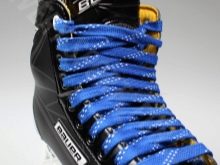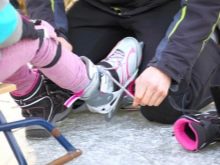How to lace up your skates correctly?
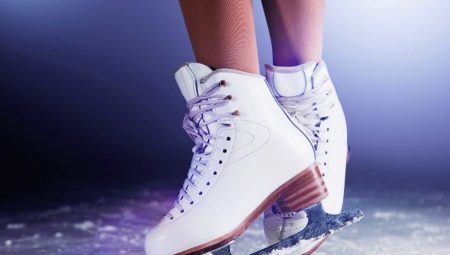
For hockey, as well as for figure skating, it is important to choose skates. And one of the first questions that beginners face before going out on the ice is how to lace them correctly. Indeed, not only health depends on this, but also the achievement of the desired results. Moreover, even those confidently standing on the ice do not always know how to lacing quickly and beautifully, as well as what consequences such mistakes can lead to.

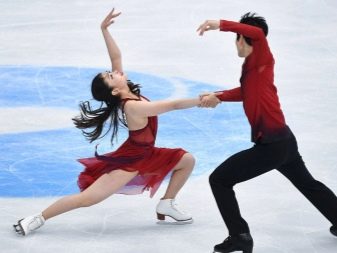
What devices are used?
Almost everyone experiences difficulties in the process of lacing skates - both adults, who have done it repeatedly, and children who do not yet have sufficient skill and strength. To speed up this process, make it easier and more comfortable, many sports stores offer "pull-ups" or "laces". Regardless of what they are called, these devices look about the same and are shaped like a metal hook with a plastic handle.
In stores and on online trading platforms, you can find devices costing from 75 to 350 rubles. The reviews are usually positive, but you need to look at the quality, since the handles of some products do not withstand the applied efforts and simply break off.

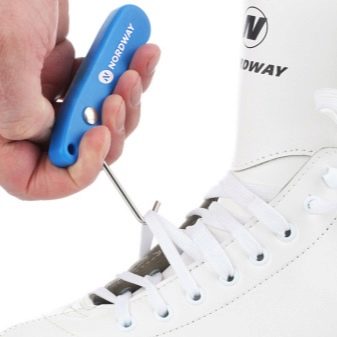
Most buyers note the following advantages:
- the device saves energy;
- safe for children;
- prevents the appearance of calluses and abrasions of the fingers, as well as damage to the manicure, which is important for girls;
- helps not only to tighten the laces, but also to quickly loosen them;
- can be used even with gloves, in cold weather;
- compactness when folded.
Using such a tool is quite simple - by pulling the hook in the right direction, you can open or pull any lacing binding in order. As with any business, it takes a little practice to achieve a quick, high-quality result. However, even with visible advantages, individual buyers write in their reviews that they continue to lacing skates with their hands, since this is more usual.
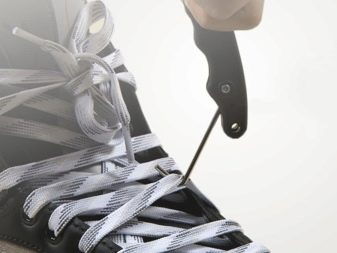

Types of lacing
As a rule, most often, a cross type of lacing is used for lacing skates, since it is quite simple and understandable for any age, and also allows not only to securely fix the leg, but also to quickly remove the skates if necessary.
For amateur rentals, parallel lacing or butterfly lacing may be used as decoration, but these are considered less reliable.
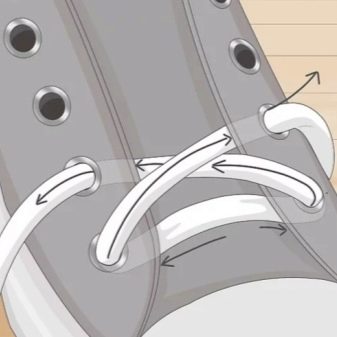
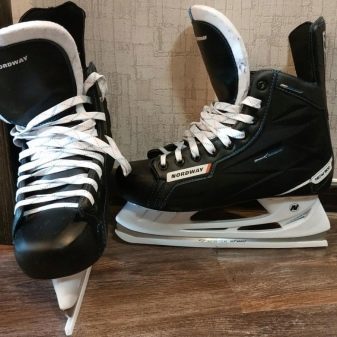
In turn, cross lacing has its own varieties.
- Upper. In this case, both ends of the lace pass through the lower eyelets from the outside to the inside. Then they are crossed and inserted into the next eyelets, only they are already taken away inside. This must be repeated to the very top.
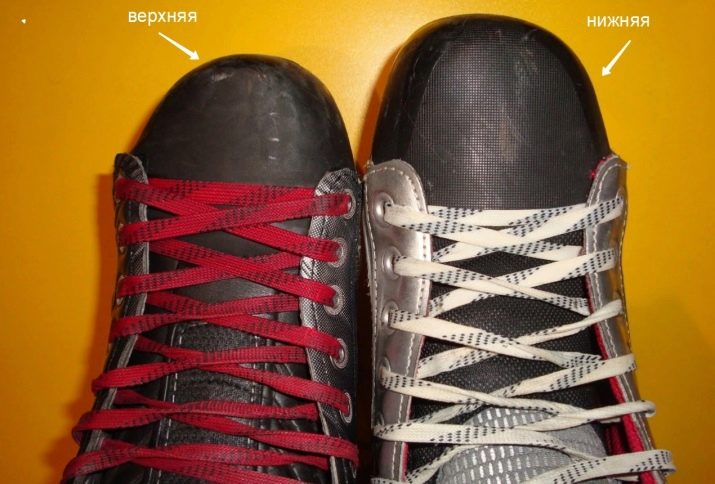
- Showcase - almost similar to the previous one. The difference is that the laces are inserted into the lower eyelets in the opposite direction. Ideally, at the very top, the ends of the laces should come out from the inside. Usually, this is how shoes are made out in stores.

- Lower. You should start in the same way as in the first version, but with each subsequent crossing, the ends of the laces are threaded from the inside. Unlike the upper, which allows you to better tighten the edges, this option more freely fixes the leg in the instep.
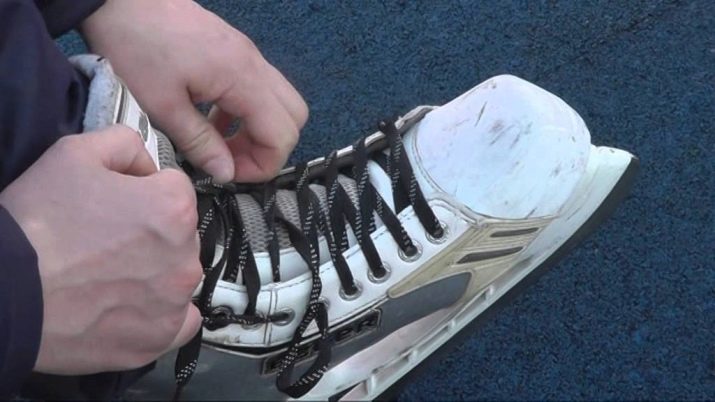
- Spiral - facilitates tension control. In this case, starting from the very bottom, the ends are threaded in different directions: if the right is from the inside, then the left is from the outside. On the next level, the opposite is true.
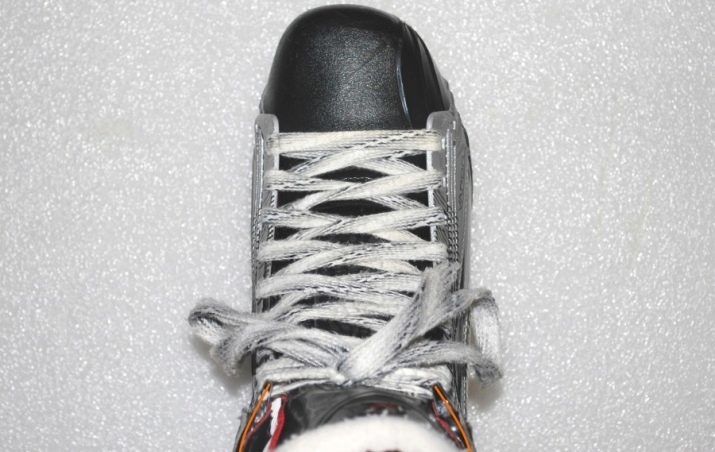
- Nodular - allows you to fix the tensile strength and reliability of the lacing. At each level, the ends of the lace go under the eyelet and go out, then crisscross and tied with a simple knot.
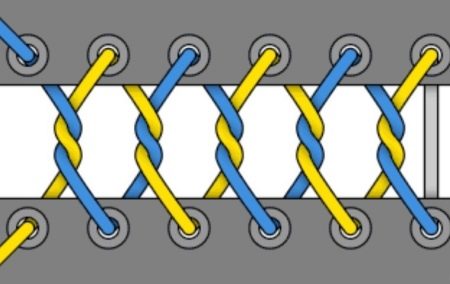
The lace-up hooks deserve special attention. The lace can go along them in the usual way, continuing the begun scheme. In another case, it is wound on top of the hook, then under it (forming a loop) and only then to the next one. In addition, experienced athletes advise lacing the hooks according to the 2-1-3-4 pattern (going to the higher ones and only then returning to the lower ones). So the ankle remains pretty tightly laced, but all painful sensations are removed from it.
Intermediate knots will help secure and keep the seal in position.
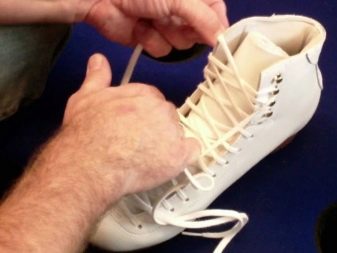
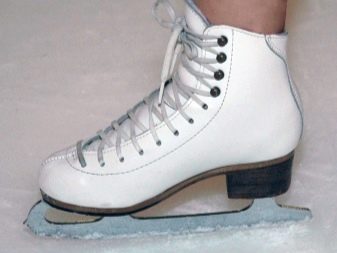
How to tie shoelaces on different skates?
Obviously, the lacing for different types of skates will be different as the athletes face different challenges. However, general principles can be formulated:
- the leg needs fixation, since any movement inside the boot can affect both the accuracy of the elements and the trajectory of movement, and the possibility of injury (not to mention banal calluses);
- if you lace up the skates too tight, during training there will be pain, numbness, and the movement of the leg muscles will be difficult.
In addition, there are special nuances that can be appreciated only during training or rental.

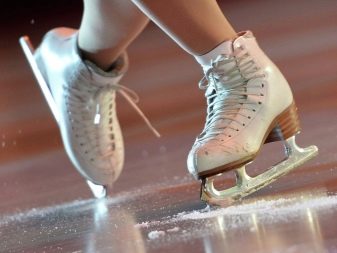
On curly
Before you get down to business, you need to dissolve the lacing - this is done from top to bottom. The skates are worn on a high woolen sock so that no folds form and the seams do not interfere. The foot is placed close to the heel. To tie the laces on skates for figure skating, they can be conventionally divided into three parts.
- The bottom (first 3-4 eyelets) requires good tensionso that the tongue and sides fit as closely as possible to the leg. The foot should not separate from the insole, and the toes can only move slightly.
- The middle (or ankle area) should be fixed with maximum fit and tension. Here you need to check that the heel is in place. This is especially true for non-professional skates, since in more advanced models the ankle is protected by the stiffness of the boot.
- Top eyelets or hooks lace up more loosely. However, a finger should not be pushed under them either. To check the tension, you need to sit down. And in order not to hinder movement - many do not lace the top pair of hooks or eyelets.
If the ends are too long, you can skip them around the ankle. For reliability, the laces are tied with a double knot and on a bow, the hanging parts of which can be hidden under trousers, leggings or tights, as well as glued with tape.
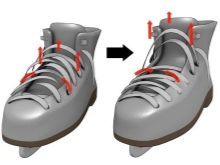
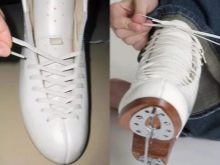
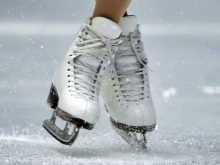
At hockey
Despite the seriousness of the sport of ice hockey, learning to tie your shoelaces is pretty straightforward - whether it's for kids ice skating, amateur or professional. It is important to do everything in stages.
- The first two pairs of eyelets are pulled together without fanaticism, but at the same time tightly.
- In the middle zone, the tightening takes maximum effort.
- And from above, the tightening becomes weaker again. The upper eyelet laces up with the ankle bent forward. To prevent the structure from disintegrating, it is necessary to use impregnated laces or separate each zone with additional knots.
It is believed that in this way maximum freedom of movement, maneuverability and safety are preserved. Many beginners notice that even famous hockey players do not lace up their skates to the very top or pull the tongue out from under the shield. This largely depends on the school, anatomical features, habits or preferences. However, in order to master the correct riding technique, all of the above recommendations must be followed.
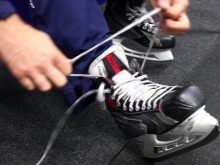
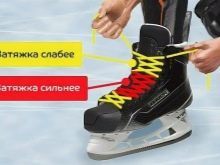

Useful Tips
In order to lace up your skates well, it is important to prepare them correctly. Better to choose oval laces - plain cotton or more durable nylon. Waxes are also reliable, but more difficult to untie. In no case should you use plastic fasteners, which can break even during a leisurely walk on the ice.
Skates must be unlaced and laced at least three times before using them for the first time. At first, with prolonged exertion, the laces can be periodically loosened and tightened again - this will help relieve discomfort and a feeling of fatigue.
The density of the lacing also depends on the model of the skate. Of course, first of all, here you need to focus on the comfort of the foot and anatomical features. A wide boot, in which the leg rotates slightly, will not be saved by any, even the tightest, fixation. At the same time, in a shoe that is too narrow and too tight, blood circulation will be impaired with all the ensuing consequences.
Undoubtedly, adults should be guided by the child's feelings, and if he says that something is interfering or pressing him, re-lacing the skates or slightly weaken the desired area. However, it is worthwhile to understand whether the complaints are exaggerated, and to be guided by the already known rules. In some sports schools, children learn to lace up skates from 6-7 years old, since only a child can understand from his own experience how comfortable he is and how it affects the technique. If there is not enough volume in the ankle, and the laces are tightened to the limit, you can use foam inserts.
Sometimes boots can become loose, not only due to improper lacing. It should be remembered that it takes time to wear them, and the leg can change at different times of the day. It is possible to adapt to skates and laces only with experience - then the time spent in the locker room will be reduced to a minimum, and the shurovka will be obtained automatically.
